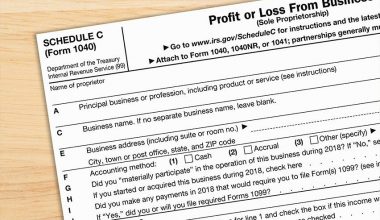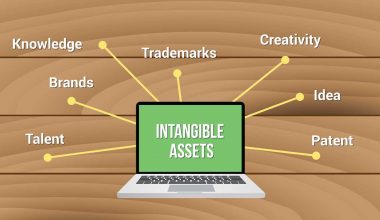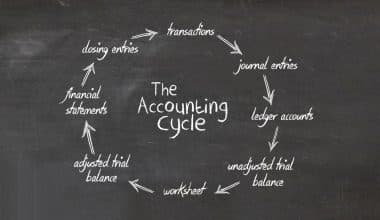You’ll agree with me that a business’s growth is critical to a business owner’s success. As a result, one of the tools or calculations you can use in your business to maintain a solid financial record is cash flow. So in this article, we will be looking at various cash flow relations like the net, discounted, free unlevered, and operating cash flow with their formula.
Cash Flow Formula
The phrase “cash flow” refers to the quantity of money earned by a company in its normal course of business over a specific period. In other words, cash flow is a document of how much money is coming in and going out of your company. Customers or clients that purchase your services bring in money. Rent for office space, payments on business loans or credit cards, and unpaid invoices are all included in a cash flow statement.
How To Work Out Cash Flow
There are four common methods for calculating cash flow, each with its own purpose and methodology. The most common way of determining insights into your business’s finances is to calculate cash flow using a cash flow statement. We will, however, look at cash flow forecasting, operating cash flow, and free and cash flow forecast.
#1. The Cash Flow Statement
This is also known as a “statement of cash flows.” It details how money moves in and out of your small firm. It incorporates data from your profit and loss statement as well as your balance sheet. This statement refers to a specific time period.
#2. Operating Cash Flow
The cash created by a company’s primary business operation over a given period of time is referred to as operating cash flow.
#3. Free Cash Flow
The free cash flow indicator shows how much money is left over in the business after paying for working capital and capital expenditures.
#4. Cash Flow Forecast
While both FCF and OCF provide a good picture of cash flow for a certain time period, it isn’t necessarily enough when it comes to long-term planning. That’s why projecting your cash flow for the next month or quarter is an excellent way to figure out how much cash you’ll have on hand in the future.
However, there are also direct and indirect cash flows, and we will be looking at their differences below.
Direct Cash Flow Indirect Cash Flow
| The direct technique solely analyzes cash transactions to generate a cash flow statement | The indirect approach involves modifying non-monetary transactions in order to convert net income into a cash flow statement. |
| Direct method stores cash transactions differently and subsequently converts them to cash flow. | The indirect technique converts net income to cash flow instantly |
| Direct approach does not employ modifications | Indirect approach employs modifications |
| Direct approach is not mostly recongnisable by businesses | More businesses prefers the indirect way |
| Direct approach takes a shorter time to apply since non-cash transactions are considered | Indirect approach takes longer the to apply since non-cash transactions are considered |
Net Cash Flow Formula
The word “net cash flow” refers to the amount of money a company makes or loses over a set period of time, which could be annual, quarterly, monthly, or longer. To put it another way, it’s the variance between a company’s cash intake and outflow throughout a given reporting period. The difference between the opening and closing cash balances of an accounting period is also known as “Net Cash Flow’.
A net cash flow value is made up of three types of activities:
1. Investment activities: This group includes any gains or losses from investing in different financing and other investments
2. Operating cash flows: Cash flows from operational operations such as sales and production are referred to as operating cash flows.
3. Financing: Some companies lend money to other companies in exchange for a profit. A corporation may also be a lender, in which case the financing operation reduces cash flows as the loan is repaid. Other financial operations, such as paying off a dividend account, could also be included.
The Net Cash Flow Formula
The following formula is useful for financial professionals to determine net cash flow:
Operating Cash Flow + Financing Cash Flow + Investing Cash Flow = Net Cash Flow Formula
Or simply put it as (Total Cash Inflows – Total Cash Outflows = Net Cash Flow Formula).
Because it can be done using an Excel cash flow statement, the above method is the most common technique to compute net cash flow. Other methods of calculating net cash flow include:
- Cash receipts less cash payment: You can compute net cash flow using cash receipts that represent all of your financial inputs and expenditures.
- Adding non-cash expenses to net profits: Adding any non-cash expenses to net profits is another simple technique to get net cash flow.
Let’s look at an example of how to calculate net cash flow using the formula: Imagine business Z has a £150,000 net cash flow from operations and a £55,000 net cash flow from financing activities. Company Z, on the other hand, lost money on investments, resulting in a negative cash flow from investing activities. How do you figure out Company Z’s net cash flow?
Using the Net Cash Flow Formula, let us calculate this: Operating Cash Flow + Financing Cash Flow + Investing Cash Flow
Net cash flow = 150,000 + 55,000 – 95,000 = 110,000
Using the formula above, it is indicated that Company Z’s net cash flow for the specific time frame is £80,000, showing that the company is reasonably healthy and should have sufficient funds to invest in new goods or pay off debts.
The Use And Relevance Of The Net Cash Flow Formula
Net cash flow is an important subject to grasp because it is a good predictor of a company’s liquidity condition. Long-term positive cash flows usually signal that a company is in good shape and that it can comfortably satisfy its short-term responsibilities without liquidating its assets. Long-term low or negative cash flow, on the other hand, signals poor financial health, and such businesses may be on the verge of financial trouble. As a result, a cash flow pattern can be used to measure a company’s financial health.
What Are Some Of The Drawbacks Of Net Cash Flow?
While net cash flow is a solid indicator of financial wellness, it’s crucial to keep in mind that some operations that generate positive cash flow might not even be helpful for the business’s general wellbeing.
Negative cash flow isn’t really a negative idea, after all. A negative cash flow from investments could imply that you’ve invested a considerable amount of money in a future revenue-generating venture.
It’s also crucial not to calculate your company’s financial viability just on the basis of net cash flow. Other financial indicators to keep an eye on include variations in your company’s overheads and fluctuations in the amount of debt it has taken on.
What Is Discounted Cash Flow And How Does It Work?
Essentially, investment and finance professionals use the DCF to analyze whether the cost of investing in something is worth the potential future profits. A Discounted Cash Flow Formula analysis can be useful in calculating discounted cash flow: What is discounted cash flow and how does it work?
Analysis Of Discounted Cash Flows
A discounted cash flow formula analysis is an excellent method for investors and businesses to assess the future worth of an investment opportunity based on the time value of money.
A discounted cash flow formula analysis determines the current value of a company’s predicted future cash flows, allowing you to determine whether future investment returns are worth the risk. I.e., if the predicted future cash flow is larger than or equal to the current value of the investment, a corporation may elect to invest in or take on a project that will yield higher future earnings.
Discounted Cash Flow Formula
A company’s discounted cash flow, or “DCF,” is a strategy used by financial experts to estimate the approximate value of a certain investment based on the expected future cash flow. When a company reviews its financial estimates of how much it should earn in the future, discounted cash flow analysis helps them establish what the current value of an investment is. The DCF is a critical indicator for both investment experts and business professionals that oversee or make decisions about corporate activities like hiring new employees or acquiring new equipment.
Discounted Cash Flow’s Benefits And Drawbacks
Depending on what financial professionals use it for, the discounted cash flow formula can have both benefits and problems. Consider the following additional advantages and disadvantages of the discounted cash flow method:
Advantages Of Discounted Cash Flow
The discounted cash flow method can be extremely useful when firms need to determine whether an investment’s future return is worth the cost, such as when purchasing long-term assets or acquiring new businesses.
- Providing a high degree of information and accounting for all cash flow assumptions for a company
- Providing significant insight into an organization’s intrinsic value
- Future predictions and expectations concerning investment returns are included.
- Providing critical evaluations during company mergers and acquisitions
- Calculating a company’s internal rate of return (IRR) on investments
- Giving businesses a means to assess the sensitivity of future investment returns to cash flow variations and other factors
Disadvantages Of Discounted Cash Flow
In other cases, the discounted cash flow formula may have disadvantages, such as:
- Inaccurate forecasts of future earnings or returns on investments can lead to unexpected results.
- Instead of accounting for the validated measures of competing firms, it only accounts for the valuation of a company.
- Calculating the overall cost of capital can be difficult.
- Discounted cash flow may be overly reliant on future outcome assumptions.
- Discounted cash flow analysis can become unduly complicated, resulting in susceptibility to cash flow swings.
Calculating An Investment’s Future Value
When performing a discounted cash flow formula analysis, investors and businesses must estimate future cash flows and the investment’s future value. The company’s estimates can aid in determining whether or not the investment is worthwhile.
Equipment, property or land, office buildings, resources, inventories, and financial assets such as stocks and bonds are all assets that a corporation analyzes when projecting future investment returns and cash flows. In addition, while projecting future earnings, corporations factor in depreciation.
Calculating the Discount Rate
One of the most significant components of the discounted cash flow calculation using the formula is the discount rate. If a weighted average cost of capital is unavailable, businesses must determine an appropriate value for the discount rate. Furthermore, the discount rate might fluctuate depending on a variety of factors, such as an organization’s risk profile and current capital market conditions. An alternate approach may be more advantageous and accurate if you are unable to estimate a discount rate or rely on a WACC number.
Using The Discounted Cash Flow Formula To Solve A Problem
Investment and financial experts can use the DCF method to generate a future outline that describes predicted returns after performing a DCF analysis, determining the discount rate, and estimating future cash flows. Investing can be beneficial if the results match or exceed a company’s initial forecasts for future cash flows. If the discounted cash flow calculation yields a value that is less than a company’s predicted future returns, it may want to investigate other options.
The formula for Discounted Cash Flow
The formula for discounted cash flow (DCF) is as follows:
DCF = CF1 + CF2 + … + CFn
(1+r) (1+r)2 (1+r)n
The cash flow formula for the first year is CF1, and the cash flows for the second year are CF2. The last year’s cash flows are designated by the letter n in the DCF financial analysis.
Unlevered Free Cash Flow Formula
Unlevered here refers to a small business that has not borrowed any capital to start and fund its operations. To put it another way, they own 100% of their capital and assets.
Unlevered free cash flow refers to a company’s cash flow before interest payments. This statistic essentially represents a company’s financial situation if it had no loans. UFCF, free cash flow to the firm, and FFCF are all terms for unlevered free cash flow.
UFCF is an overstated amount of what your firm is actually worth because it does not account for all money due. It might provide you with a more appealing number than your leveraged free cash flow calculation to potential investors and lenders.
Furthermore, because organizations invest in diverse ways, using the formula for unlevered free cash flow (UFCF) allows for a more direct comparison of cash flows for different businesses. It’s useful for comparing and contrasting firms. Because UFCF creates a level playing field for comparison analysis, each business may have a varied payment rate with its borrowers.
However, from the formula, capital expenditures and working capital requirements are deducted from unlevered free cash flow, which is the cash required to sustain and increase the company’s investment portfolio in order to create revenue and earnings. To calculate the firm’s unlevered free cash flow using the formula, noncash items like depreciation and amortization are transferred back to earnings.
Free Cash Flow Unleveraged vs. Free Cash Flow Leveraged
Debts are excluded from unlevered free cash flow, whereas debts are included in levered free cash flow. As a result, unlevered free cash flow will be higher than levered free cash flow. The assumption for leveraged free cash flow is that the company has debts and borrows money.
The balance sheet might show both levered and unlevered free cash flow. Investors are interested in leveraged cash flow because it reveals how much capital a company has to develop.
The difference indicates how many financial responsibilities the company has and whether it is overstretched or has a healthy level of debt. A company’s expenses can exceed its earnings, resulting in a negative levered cash flow. This isn’t ideal, but investors shouldn’t be too anxious as long as the problem is just brief.
Note that knowing the difference between leveraged and unleveraged free cash flow is also a vital reason to have it.
What Is the Purpose of Unlevered Free Cash Flow?
Using a formula, unlevered free cash flow (UFCF) is a high-level metric for determining a company’s enterprise value. This quantity may never be seen or needed by the average consumer. The UFCF is useful when a company wants to:
- Demonstrate the worth of your company to potential investors.
- Make a comparison of your company’s value to that of other companies.
- Calculate the net present value (NPV)
- Remove the negative impact of debt on a company’s worth.
Is There Any Disadvantage To Unlevered Free Cash Flow?
Yes, employing unlevered free cash flow in business modeling has drawbacks.
- It could be an exaggerated measure created solely to impress investors.
- It’s possible that the capital structure isn’t considered in the equation.
- Companies are free to alter UFCF as they see fit.
- It may have unfavorable repercussions.
Formula For Unlevered Free Cash Flow
The following is the formula for calculating unlevered free cash flow (UFCF):
Unlevered free cash flow formula = EBITDA-CAPEX-Working Capital-Taxes
It’s vital to have a firm grip on the following definitions in order to properly comprehend and be able to apply the unlevered free cash flow formula in its calculation.
- Unlevered free cash flow, or UFCF, is the final number you’re trying to verify.
- “Earnings Before Interest, Taxes, Depreciation, and Amortization” is a typical acronym for “EBITDA.” This is a crucial element of the problem that you should figure out ahead of time.
- CAPEX stands for capital expenditures, which might include investments in buildings and tools that are necessary for business growth.
- The difference between assets and liabilities is known as working capital.
- Any federal, state, or municipal tax responsibilities may be included in taxes.
Who Is Interested In Unlevered Free Cash Flow?
Unlevered free cash flow can be used to demonstrate enterprise value to investors, such as:
- Bankers that specialize in investment banking
- Shareholders
- Inexperienced investors
- Buyers who might be interested
For these investors, a simple cash flow statement might not be sufficient. UFCF can be useful in this case to show a more thorough future view of a single company.
Free Cash Flow Formula Net Income
Free Cash Flow (FCF) is a term that refers to the amount of Cash from Operations minus capital expenditures in the FCF Formula. In other words, FCF is the amount of cash earned by a corporation after it has accounted for reinvestment in non-current capital assets.
Also, free cash flow is defined as a company’s cash on hand after all expenses have been paid. Cash is a crucial component of any organization. It is necessary for a firm to operate with it; some investors give a lot more to cash flow statements than to other accounting records. After all expenses and debts have been paid, a company’s free cash flow is calculated. It aids in determining the true financial situation of free cash flow as shown in the cash statement.
The free cash flow equation aids in the determination of genuine profitability. It also aids in the calculation of the dividend distribution available to a shareholder. As a result, investors gain clarity regarding the company’s financial health, as well as information about the company’s liquidity, as a result of this.
The formula for calculating Free Cash Flow (FCF) is as follows:
Free Cash Flow (FCF)= Net Income+Non-Cash Expenses-Increasing in Working Capital- Capital expenditure
Or Simply put in the most modified way
Free Cash Flow (FCF)= Cash from Operations – CapEx.
Usefulness And Significance
The free cash flow equation has a variety of applications. The following are some of them: –
- To determine a company’s profitability.
- Obtaining a financial position in a business.
- The free cash flow formula aids in the decision-making process for new products, loans, and commercial prospects for a corporation.
- The free cash flow formula aids in determining the amount of cash available for distribution among corporate shareholders.
Assume that a company’s FCF is high. It denotes that a corporation has the cash to introduce a new product, expand its operation, and grow. Even Nevertheless, if a firm’s FCF is low, a large investment may be achievable, and the company may develop in the long run. Since FCF does assists an investor in calculating their profitable returns on investment in a specific company, it is useful.
The Advantages Of Free Cash Flow
Here’s a list of them:
#1. For Financial Analysts and Investors
This metric is used by investors and analysts to identify companies that are showing signs of growth.
- It aids them in determining whether or not a corporation pays dividends.
- This enables the cash available to be aligned with the company’s profitability.
- This helps you to determine whether the dividends paid by firms deviate from their real payment capacity.
2. A Business Associate
People who want to join a partnership business model frequently look for a company that has a proven track record of long-term profitability. Before making a final decision, they take into account a company’s FCF and estimate the viability of its operations.
3. The Creditor
Business endeavors require a large amount of capital to operate, and they frequently seek the help of creditors to obtain it. Because the credit amount is large, the risk to creditors is also large.
- FCF is a metric used to assess a company’s ability to repay debt.
- This helps them decide whether or not to grant a loan to a company.
The Disadvantages Of Free Cash Flow
The following are some examples of its limitations in terms of free cash flow:
- The amount of money spent on capital projects fluctuates from one financial year to the next, as well as between industries. As a result, one must analyze a company’s FCF over a long period of time against the industry’s backdrop.
- A high free cash flow may imply that a corporation isn’t putting enough money into its venture.
- A low CFC does not always imply that you are in bad financial shape. It usually entails a lot of expansion and growth.
As a result, free cash flow is a crucial financial metric for determining a company’s profitability and efficiency.
However, in order to obtain a more accurate and relevant picture of the financial standing of a company, business owners, investors, and analysts must use additional financial measurements.
Businesses Can Also Boost Their Free Cash Flow by:
- fiscal consolidation to reduce interest rates and make repayment schedules more efficient.
- Capital expenditures are being cut, limited, or put off.
- Using management accounting to enhance economic strategy and corporate operations by hiring a CFO or a fractional CFO.
Business owners can utilize free cash flow to gauge the reaction of their companies to their products, track growth, and make data-driven choices to generate profits, in addition to tracking their income statements, balance sheets, and cash flow statements.
What Is the Difference Between Cash and Free Cash Flow?
Despite their resemblance in sound, they are not the same.
- The flow of money into and out of a business over a set period of time is referred to as cash flow. A cash flow statement is used to display it.
- The quantity of cash available in a business is known as free cash flow (remaining after all expenditures). The present cash value of a corporation is sometimes equated with free cash flow. It is not typically regarded as a business valuation because it does not take into account a company’s growth potential.
Operating Cash Flow Formula
The amount of cash created by a company’s regular operating activities during a given time period is referred to as operating cash flow (OCF). In other words, it is the component of the cash flow statement that displays how much income a company earns from normal operations. Offering assistance like paying employees, marketing and advertising, and other tasks that are required to run a business are all examples of normal business operations. Investments and interest are not factored into operating cash flow. OCF provided by operations, cash flow from operating activities, and free cash flow from operations are all terms used to describe operating cash flow.
Therefore, to get at the total cash created or consumed in the period, using the operating cash flow formula, starts with net income (at the bottom of the income statement), subtracts any non-cash items, and adjusts for changes in net working capital.
When analyzing a company’s performance and financial health, operating cash flow should be combined with net income, free cash flow (FCF), and other measures.
The Operating Cash Flow Formula for Businesses
It’s crucial to know how to compute how much cash flow was generated in a period, whether you’re an accountant, a financial analyst, or a private investor. We may take for granted how many steps are actually involved in the calculation while viewing financial statements.
Let’s look at the operating cash flow formula and its components one by one.
Operating Cash Flow Formula: Short Form
Operating Cash Flow = Net Income – Non-Cash Expenses—Working Capital Increase
Long-Form: Operating Cash Flow Formula
Operating Cash Flow Formula = Net Income + Depreciation + Stock-Based Compensation + Deferred Tax + Other Non Cash Items – Increase in Accounts Receivable – Increase in Inventory + Increase in Accounts Payable + Increase in Accrued Expenses + Increase in Accrued Expenses + Increase in Deferred Revenue + Increase in Deferred Revenue
The operating cash flow formulas above are supposed to give you an idea of how to do the computation independently using the formula, but they aren’t complete. Non-cash items and changes in current assets and liabilities that are not specified above could exist. The most important thing is to make sure that everything is in order, which will differ from company to firm.
Net Income vs. Operating Cash Flow
What’s the difference between net income and earnings per share (EPS), which are two of the most commonly used financial metrics? When it comes to preparing financial accounts, the fundamental difference is due to accounting standards like the matching principle and accrual principle.
All types of expenses are included in net income, some of which may have been paid for and others that may have merely been created by accounting standards, e.g. depreciation.
Furthermore, a considerable disparity between OCF and net income can be caused by a company’s revenue recognition concept and the matching of expenses to revenue timing.
Unfortunately, saying that one number is always higher or lower than the other is not possible. On occasion, OCF exceeds net income, while on other occasions it does not.
Net income is not the same as operating cash flow. Let’s start with some simple definitions:
- Earnings per share: (EPS) is the profit divided by the number of outstanding shares of stock.
- Operating cash flow: cash flow generated by typical business activities.
- Net Income: Total sales income, including investments, less total expenses equals net income.
Total sales minus associated expenses, operating expenses, depreciation, interest, taxes, and any other charges equals net income (or net earnings). Net income provides a more thorough view of total profitability in terms of your company’s worth, whereas OCF examines profitability in terms of capital available for usage in your company.
What Is The Significance Of Operating Cash Flow?
The OCF measures how self-sustaining a company is in terms of making a profit from ordinary business operations alone. This is significant from several angles:
#1. Borrowers
Financial organizations examine the chances of receiving their money back when evaluating potential borrowers. Businesses with a favorable OCF have a better chance of getting a loan.
The viewpoint of the business owner is the most essential of all. It’s critical that you understand your company’s ability to make a profit on its own. Keep track of this indicator over time to see when your company becomes more or less profitable, and then investigate why.
#2. Financial Experts
Financial analysts pay close attention to OCF, especially in larger organizations. It is a significant measure of a company’s financial performance because it reveals the overall health and profitability of the business.
#3. Investors
Investors want to put their money into something that will expand and profit them significantly. In addition, investors will also be more confident in your capacity to earn a return on their investment if you have a high OCF.
Taking The Next Step With Operating Cash Flow
Operating cash flow is a critical accounting statistic for determining a company’s ability to make a profit from day-to-day activities. Calculating this number allows you to see not only how much money you’ve made, but also how much capital you have left after taxes, depreciation, and operational costs are taken into account.
What Are the 3 Types of Cash Flows?
There are three types of cash flows:
- Investment activities
- Operating cash flows
- Financing
How Do I Calculate Free Cash Flow?
Free cash flow can be calculated as follows:
Free Cash Flow (FCF)= Net Income+Non-Cash Expenses-Increasing in Working Capital- Capital expenditure
Or Simply put in the most modified way
Free Cash Flow (FCF)= Cash from Operations – CapEx
How Do You Calculate Cash Flow from Operating Activities?
To calculate operating cash flow here is a formula to use:
Operating Cash Flow = Net Income – Non-Cash Expenses—Working Capital Increase.
What Are the 2 Methods of Cash Flow Statement?
Direct method: The operating cash flows are shown as a list of cash flows coming in and going out. In essence, the direct method takes the money you spend and takes it away from the money you get. Indirect method: The indirect method shows operating cash flows as a reconciliation from profit to cash flow.
What Are the 3 Components of Cash Flow Statement?
The cash flow statement is broken down into three parts: operating activities, investments, and financing activities.
What Is a Good Cash Flow Statement?
The statement details the cash inflow and outflow experienced by the company during a certain time frame. It is a metric for gauging a business’s near-term viability. To be in “excellent form,” a business must regularly generate more revenue than it spends.






